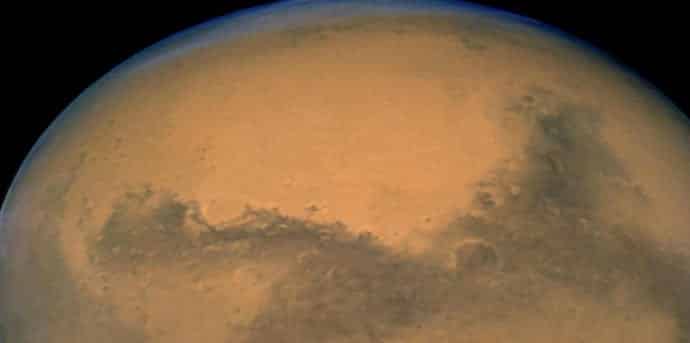NASA just detected oxygen in the Martian atmosphere
For the first time, scientists have detected atomic oxygen in the atmosphere of Mars on an instrument onboard the Stratospheric Observatory for Infrared Astronomy (SOFIA) since the last observation 40 years ago. These atoms were found in the upper layers of the Martian atmosphere known as the mesosphere.
SOFIA clearly confirmed that they have detected a small amount of atomic oxygen on Mars.
“To observe the far-infrared wavelengths needed to detect atomic oxygen, researchers must be above the majority of Earth’s atmosphere and use highly sensitive instruments, in this case a spectrometer. SOFIA provides both capabilities” said Pamela Marcum, SOFIA project scientist.
According to NASA, the presence of atomic oxygen is essential in the behavior of elements in the Martian atmosphere.
“Atomic oxygen affects how other gases escape Mars and therefore has a significant impact on the planet’s atmosphere,” declared NASA. In order to study these variations to help better understand the atmosphere of the Red Planet, scientists will continue to use SOFIA.
“Atomic oxygen in the Martian atmosphere is notoriously difficult to measure,” said Pamela. “To observe the far-infrared wavelengths needed to detect atomic oxygen, researchers must be above the majority of Earth’s atmosphere and use highly sensitive instruments, in this case a spectrometer. SOFIA provides both capabilities.”
SOFIA, the world’s largest airborne observatory is installed inside a modified version of a Boeing 747, which is capable of flying higher than a normal commercial plane to enable the spacecraft to perform astronomical behaviors, according to a report by Discovery News.
SOFIA has been reporting for duty for some time now and has observed in various NASA space missions projects.
The Viking and Mariner missions of the 1970s made the last measurements of atomic oxygen in the Martian atmosphere. Thanks to SOFIA’s airborne location, flying between 37,000-45,000 feet, above most of the infrared-blocking moisture in Earth’s atmosphere, these more recent observations were possible.
“The advanced detectors on one of the observatory’s instruments, the German Receiver for Astronomy at Terahertz Frequencies (GREAT), enabled astronomers to distinguish the oxygen in the Martian atmosphere from oxygen in Earth’s atmosphere” said the SOFIA Science Center, NASA’s Ames Research Center.
SOFIA is a Boeing 747SP jetliner modified to carry a 100-inch diameter telescope. It is a joint project of NASA and the German Aerospace Centre.
Researchers presented their findings in a paper published in the journal Astronomy and Astrophysics in 2015.

